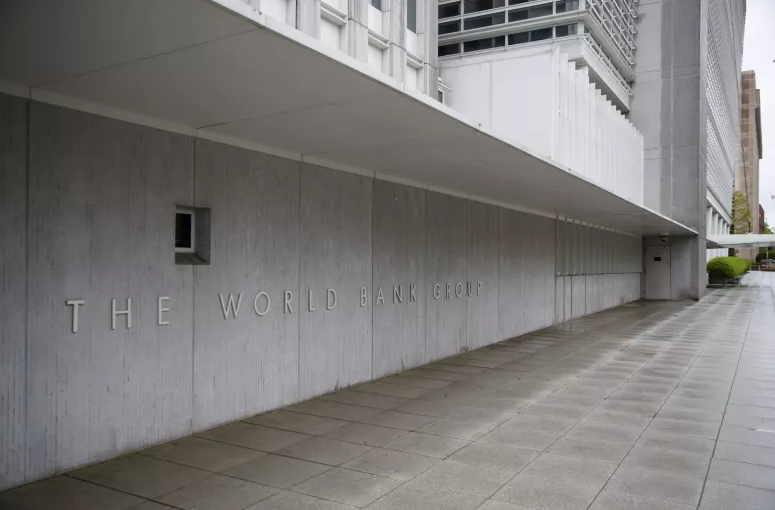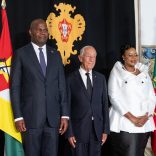Mozambique: National Financial Inclusion Strategy 2025-2031 rolled out
Mozambique: Case study of impact of lack of financial transparency – World Bank

File photo: Lusa
The World Bank has cited Mozambique as a case study where the consequences of a lack of transparency in public finances is concerned, dedicating three pages of its World Development Report to the crisis relating to the country’s billion-dollar ‘hidden debts’.
“These hidden debts had significant implications for Mozambique’s ability to service its debt, as it dramatically increased the amount of interest and amortization due in a given year..,” reads the three-page section in the report. ” In particular, prior to the disclosure of these debts, the market was operating under the assumption that 11 percent of Mozambique’s tax revenue would suffice to cover the debt service for 2016. With the disclosure of these debts, it was clear that at least 22 percent of tax revenue, or about $600 million, was needed”
The World Bank’s flagship report focuses on the impact of the Covid-19 pandemic on countries, businesses and households, especially the question of how to reduce the financial risks arising from extraordinary policies adopted in response to the pandemic while supporting an equitable recovery.
In the report, transparency regarding the financial situation of countries is classified as fundamental, and the example of Mozambique serves as a warning about what can happen to a country that hides state guarantees for loans taken out by public companies.
“In Mozambique’s 2015 debt sustainability analysis, the World Bank and International Monetary Fund (IMF) projected the country’s external public and publicly guaranteed debt for 2016 to be 61 percent of GDP.e,” it states. “The equivalent document published in 2018 estimated the external public and publicly guaranteed debt for 2016 to be 104 percent of GDP.f.”
At issue are loans taken out by public companies in Mozambique, backed by state guarantees but hidden not only from parliament and other national institutions but also from the international financial market, donors and creditors. The criminal case relating to the debts has already reached the trial stage.
“The projected increase in debt service … was too large for the Mozambican economy to endure, and Mozambique defaulted on its debt in 2016,” the report recalls.
According to IMF data, Mozambique’s ratio of public debt to gross domestic product rose from 64.3% in 2014 to 120% in 2016 and has continued above 100% since then, and is expected to end this year at 127.6%, the third highest in sub-Saharan Africa, after Eritrea and Cabo Verde, although in the latter’s case the majority of the debt is concessional, which is of less concern.
“The deterioration of Mozambique’s fiscal position and risk rating had far-reaching economic consequences and turned a crisis of transparency into wider economic turmoil that had many characteristics of a conglomerate crisis,” the text notes, recalling that the debt crisis “was accompanied by a significant real exchange rate depreciation starting in 2014, a rise in inflation, reduced space for fiscal expenditures, as well as loss of confidence by external investors and the international community, leading to an acute downgrade in the country’s sovereign credit rating.”
The cut in budget support decreed by Mozambique’s main donors from 2016, in some cases, remains in place to this day – as is the case with Portugal, which only finances specific projects and has stopped donating funds for the state budget.
Mozambique, the World Bank says, is only now recovering from the credibility crisis that has undermined not only the ruling party, but also the institutions and the country itself, and which is now cited as a negative example in the report’s chapter on financial transparency.
“Only in 2019 was Mozambique’s debt classified as sustainable on a forward-looking basis—eliciting enough confidence that the World Bank and IMF provided financing in the aftermath of Cyclone Idai,” the bank recalls, stressing that “an important step to rebuilding confidence was improving transparency in debt reporting and debt operations implemented since.”
Despite the measures, concludes the three-page case study, the country remains in debt distress as it litigates in court over the validity of state guarantees, and “still faces unfavourable borrowing conditions that imply a high cost of credit not just for the government but also for firms and households.”
- You may read /download the World Development Report 2022: Finance for an Equitable Recovery HERE.












Leave a Reply
Be the First to Comment!
You must be logged in to post a comment.
You must be logged in to post a comment.